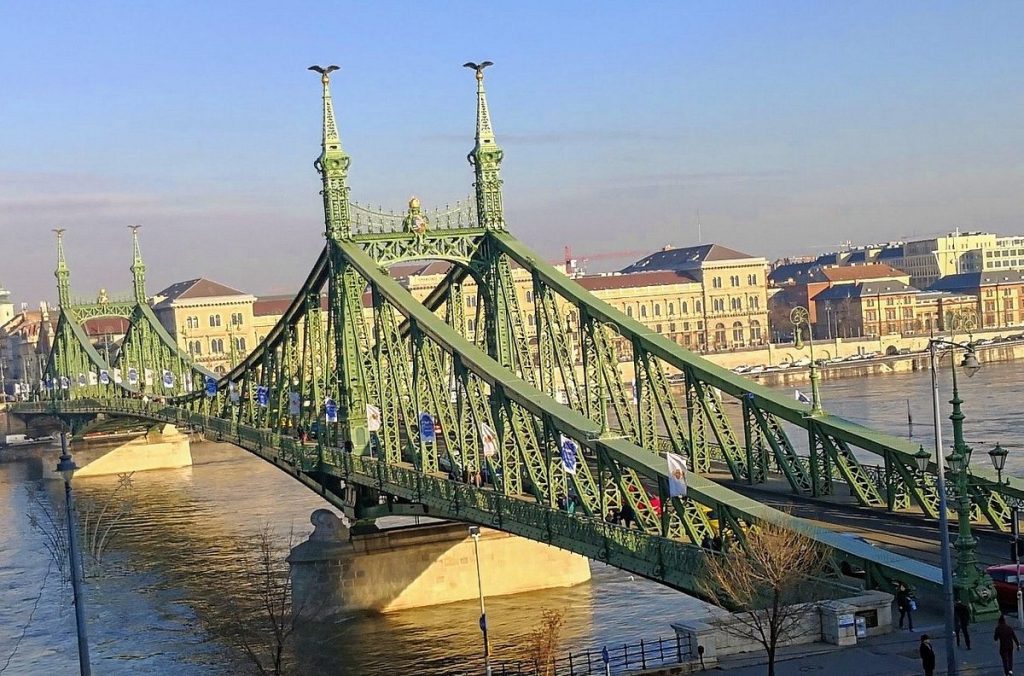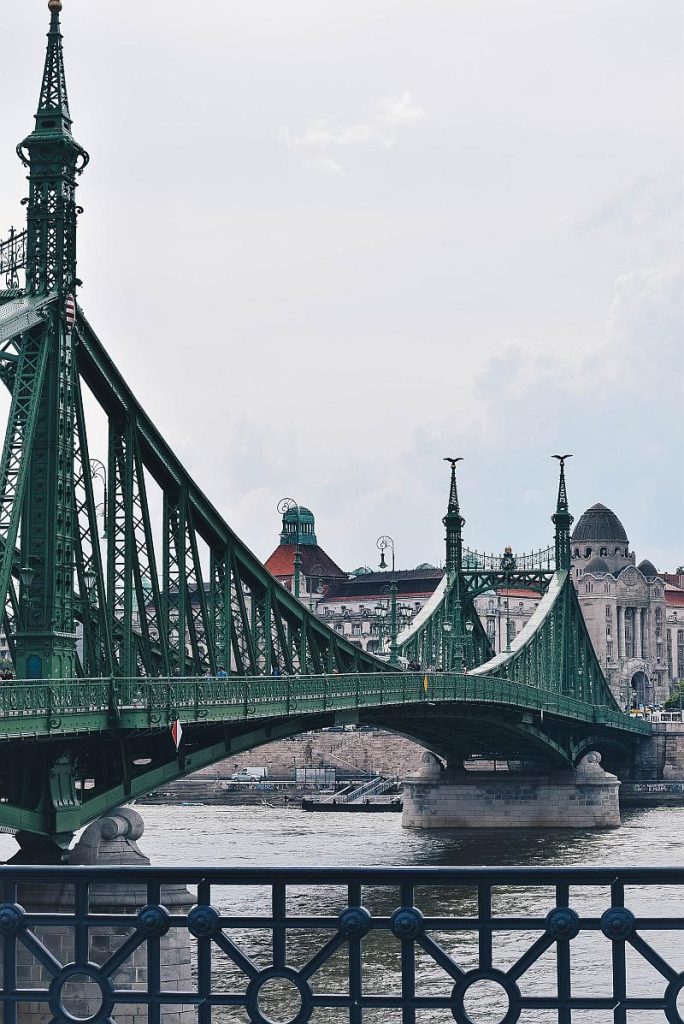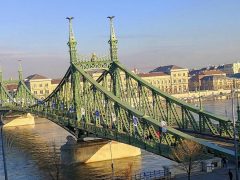Liberty Bridge: Budapest’s Architectural Icon and Historical Beacon
With its distinct green color and ornate design, the Liberty Bridge is not just a bridge in Budapest; it’s a vibrant symbol of the city’s resilience and rich history. As an expert in Budapest’s iconic landmarks, I invite you to discover the Liberty Bridge’s fascinating story and architectural marvel, a vital link between Buda and Pest.
A Bridge with Historical Significance
Commissioned by the Law Act of 1893 alongside the Elizabeth Bridge, the Liberty Bridge has a storied past. Designed by a team led by Feketeházy János, its construction began in 1894, strategically located between Fővám Square and Gellért Baths. Originally named the Franz Joseph Bridge, it was renamed to symbolize the nation’s resilience and freedom.
An Architectural Masterpiece
The Liberty Bridge is a showcase of architectural ingenuity. Designed by Gállik István, Beke József, and Jurkinyi Jenő, with aesthetic contributions from Nagy Virgil, it features distinctive elements such as the customs houses at its abutments and the iconic portals above the pillars. The pointed spires and perched Turul birds exemplify the strength and artistry of the ironwork.
Resilience and Reconstruction
The bridge’s history is marked by resilience. It was the first permanent bridge in Budapest to be reopened after WWII. The reconstructed bridge, led by Haviár Győző and Sávoly Pál, resumed its role in connecting the city on August 20, 1946, standing as a testament to Budapest’s unyielding spirit.
Unique Features for Visitors
Despite being Budapest’s shortest bridge at 331.2 meters, the Liberty Bridge offers a rich experience for visitors. Its beechwood block road surface and central tram lines reflect the city’s transportation heritage. The narrow lanes, accommodating cars and trams, add to its unique charm. The symbolic silver rivet, placed by Franz Joseph, is a nod to its royal inauguration.
Crossing More Than Just the Danube
For travelers, crossing the Liberty Bridge is more than a mere passage over the river; it’s an immersive journey through Budapest’s architectural and historical landscape. The bridge not only connects Buda and Pest but also symbolizes the city’s enduring spirit and cultural richness.
Did you know about the Liberty Bridge?
Liberty Bridge (Szabadság híd in Hungarian) is another notable bridge in Budapest, Hungary, with a distinctive history and design. Here are some key facts about Liberty Bridge:
- Historical Context: Liberty Bridge, originally named Franz Joseph Bridge, was constructed as part of the Millennium World Exhibition in 1896, which celebrated the 1,000th anniversary of the Hungarian conquest of the Carpathian Basin. Emperor Franz Joseph himself officially opened it, hammering in the last silver rivet on the Pest side of the bridge.
- Location and Significance: The bridge spans the Danube River, connecting Gellért Square in Buda with Fővám Square in Pest. It is the shortest bridge in Budapest’s central area and is near several key city landmarks, including the Great Market Hall and Gellért Baths.
- Architectural Features: Liberty Bridge is known for its Art Nouveau style, making it one of Budapest’s most stylistically distinctive bridges. The bridge features prominent bronze statues of the Turul, a mythological bird in Hungarian folklore, and is adorned with the Hungarian coat of arms and other national symbols.
- Construction and Design: Designed by János Feketeházy, the bridge is a cantilever truss bridge with a length of 333.6 meters (1,095 feet) and a width of 20.1 meters (66 feet). It was one of the earliest steel applications in bridge construction in Hungary.
- Destruction and Reconstruction: Liberty Bridge was destroyed during World War II and subsequently rebuilt like the other major bridges in Budapest. The reconstruction was completed in 1946, making it the first Budapest bridge to be reopened after the war.
- Recent Renovations: The bridge underwent a major renovation from 2007 to 2009, during which it was fully restored to its original splendor, including the reconstruction of its historic ornaments and statues.
- Cultural Importance: Liberty Bridge has become a beloved part of Budapest’s urban landscape. It’s a popular location for locals and tourists, often used for leisure activities, including temporary pedestrianization during summer weekends, when people gather to enjoy the bridge free of traffic.
- Symbolic Transition: In 1946, the bridge’s name was changed to Liberty Bridge, symbolizing the country’s liberation and the end of World War II. It stands as a symbol of freedom and resilience in the heart of Budapest.
Liberty Bridge, with its historical significance, architectural beauty, and cultural vibrancy, is a functional structure and symbol of Budapest’s rich history and evolution into a modern European capital.
In conclusion, the Liberty Bridge is essential to Budapest’s identity, embodying the city’s history, architectural brilliance, and resilient spirit. As you walk or ride across this iconic bridge, you’re not just traversing the Danube; you’re experiencing a piece of Budapest’s soul, a bridge that has stood the test of time and continues to be a beloved landmark for locals and visitors alike.





